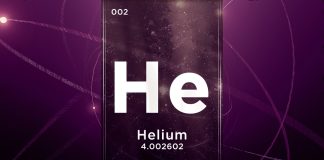Four Corners Helium is leading future innovations in helium exploration through its advanced scientific projects.
Four Corners Helium is a helium exploration and operating company based in Durango, Colorado. The team is driven by economic success, scientific integrity, and stewardship of the environment.
The company boasts a powerhouse of professionals with over 400 years of combined experience and expertise committed to finding and producing helium reservoirs. Since its inception, Four Corners Helium has used the expertise of 14 different geological and geophysical specialists, integrating proprietary LithSeis® AVO, wellbore petrophysics, applied geochemistry, regional structural frameworks, and the expertise of distinguished local academia. This group eventually created subsurface and paleo-reconstruction maps over almost ten million acres of potential helium prospects.
Some of the most advanced technologies on the market require helium to operate, such as MRIs in hospitals, hard drives, smartphones, supercomputers, and space exploration. The demand and applications for this irreplaceable gas will continue to grow, and the 4-way intersection of Arizona, New Mexico, Utah and Colorado delineate the crosshairs for helium fortunes.
Voluminous, helium-source rocks that underlie the Colorado Plateau of the Four Corners region are over 1.6 billion years old. These anonymously shallow granitic source rocks are blanketed by one to three thousand feet of helium sealing tight salt layers deposited over millions of years. There is no other place in the world with a similar set of geological criteria.
In March 2021, Four Corners Helium formed an exclusive partnership with Perth based Grand Gulf Energy (ASX:GGE, OTCQB:GRGUF) on the southeast Utah Red Helium Project, assembling almost 30,000 acres of highly strategic mineral leases. The relationship with GGE has been integral in procuring much needed risk capital for its helium pursuits.
The Red Helium project
The Jesse 1A well, within the Red Area helium reservoir in the Paradox Basin, Utah, has recently established a ‘discovered’ status by third-party appraiser Sproule, Inc. This discovery boasts almost 1% helium concentration (1.7x higher than expected) and multiple TCF of CO2 that can be sequestered for Q45 tax credits or utilised in Enhanced Oil Recovery projects.
The 200’ column height in Jesse 1A indicates the Red area could be four or five times larger than Air Products’ helium field, 15 miles east in Doe Canyon Field. Doe Canyon went into production in 2016 and is estimated to recover 3-5 billion cubic feet of helium, even with helium concentrations at one-half the Red area.
The Red Area helium reservoir is well-positioned, with existing pipelines to the Lisbon Valley helium processing plant near Moab, Utah, whose liquefaction unit can process helium to 99.9995% purity. Onsite processing and trucking are also an option due to a gas gathering and sales agreement that has been executed with Paradox Resources, the owner of the Lisbon Helium Plant.
The Coyote Wash Helium project
For the past three years, Four Corners Helium has developed a solid working relationship with the Ute Mountain Utes of southwest Colorado. After supplying them with a six-month study for helium prospectivity on their 553,000 acres, Four Corners Helium secured an optimal 8960 ac mineral lease for helium exploration (Phase I). Successful drilling from this initial seven-well drilling programme could lead to leasing additional lead areas totaling 25-50,000 acres.
Utilising the UMU’s robust two and three-dimensional seismic library has been instrumental in de-risking the subsalt Mississippian Leadville formation. Seismic reprocessing by our partner, eSeis Inc, provides patented direct detection techniques for identifying porosity compartments – a key element in exploring complex Mississippian carbonates. With potential flow rates of 5-10,000 cubic feet of helium per day and helium percentages at 2-3%, this SW Colorado helium endeavor could be impactful to North America for decades to come.
FCH desires to augment the financial livelihood of the Ute Mountain Utes while at the same time respecting their lands as if they were our own. We plan to use solar for our electrical needs while researching a sophisticated water filtering system for converting produced water to urgently needed agricultural waters. If all goes well, the drill bit could break ground by 4Q 2023.







